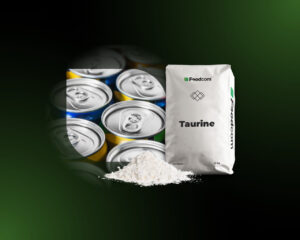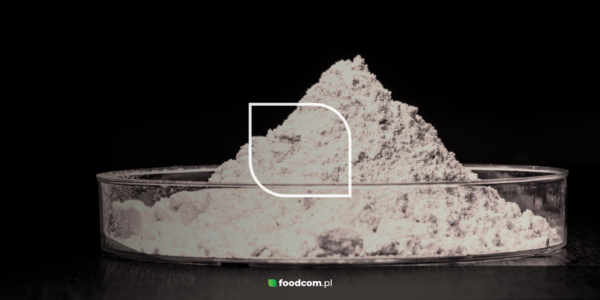- Amino acids are divided into protein and non-protein amino acids, which do not form proteins.
- Non-protein amino acids do not form proteins, they can have other functions or determine the properties of proteins by being incorporated into their structure through modification.
- Known non-protein amino acids with important functions for humans include carnitine, GABA, beta-alanine, taurine and others.
- Non-protein amino acids are used as food supplements, pharmaceuticals, feed and fertilizer additives, precursors of biopolymers and building materials as well as in the food industry, cosmetology and scientific research.
Non-protein biogenic amino acids – what functions can they perform?
Amino acids are organic chemical compounds that contain a basic (amine) and an acidic group (usually a carboxyl group, -COOH). Amino acids can be divided into synthetic and natural – biogenic – amino acids, which in turn are subdivided into protein and non-protein amino acids. As the name suggests, the protein amino acids are contained in the proteins of the human body, while the non-protein amino acids fulfill other functions. Let’s take a closer look at the classification of amino acids, the basic protein and non-protein amino acids and their uses.
Properties of amino acids
As already mentioned, all amino acids are divided into protein and non-protein amino acids. The former have the ability to form peptide bonds, forming protein structures. They occur in the form of α-amino acids. Under physiological pH conditions, amino acids are mostly found in the form of a hermaphrodite ion.
Non-protein amino acids do not have the ability to form proteins, but can also be found in them. They do not form them directly, but can be incorporated into them through post-translational modifications. This applies to about 140 non-protein amino acids. The amino acids added in this way play important roles in the protein, such as determining its localization in the cell, giving it the ability to bind to the phospholipid membrane or to calcium cations, as well as various other properties that determine the functions of a given protein.
However, amino acids that are not proteins can have different functions without being part of proteins. This is the case with GABA acid, which acts as a neurotransmitter. They can also play an intermediate role in the metabolic cycles of standard amino acids – one example is citrulline, which is involved in the urea cycle.
Division of amino acids
There are several hundred amino acids. Of these, only 20-23 are basic protein amino acids. All protein amino acids are: alanine, cysteine, aspartic and glutamic acid, phenylalanine, glycine, histidine, isoleucine, lysine, leucine, methionine, asparagine, proline, glutamine, arginine, serine, threonine, valine, tryptophan and tyrosine. Selenocysteine and pyrolysine are also frequently mentioned
The amino acids of proteins can be distinguished according to the polarity of their side chain, their chemical nature, the end product of their degradation or whether they can be synthesized in the human body (endogenous amino acids) or whether they have to be supplied from outside (exogenous amino acids).
Important non-protein amino acids
Non-protein amino acids are found in the body of humans, other animals, as well as plants and microorganisms. Important non-protein amino acids for humans include, for example:
- carnitine – is involved in the transport of fatty acids in the cell, mainly in muscle;
- GABA (gamma-aminobutyric acid) – is a neurotransmitter with inhibitory effects;
- levothyroxine – is an essential hormone produced by the thyroid gland;
- hydroxyproline (Hyp) – is the main component of collagen, determining its mechanical strength;
- hydroxylysine (Hyl) – found in proteins that make up connective tissue, such as collagen;
- cystine – participates in stabilizing protein structure by participating in the formation of disulfide bridges;
- selenomethionine (SeMet) – found in Brazil nuts, cereal grains, soybeans and legumes; is a human source of selenium;
- citrulline – is a derivative of ornithine, together with ornithine it participates in the urea cycle, together with malic acid it can stimulate aerobic energy production by muscles during exercise;
- beta-alanine – is a component of biologically active compounds in the human body: carnosine, pantothenic acid, balenine and anserine (antioxidant);
- sarcosine – found in mammalian muscles and in antibiotics (such as actinomycin).
There are many amino acids in plants that are not proteins and that are important for them, such as canavanine and mimosine, which are involved in protective mechanisms against herbivores (so-called antiphidants). Beta-alanine is also found in plants and microorganisms – it is used to synthesize pantothenic acid (vitamin B5), which is a component of coenzyme A that plays a key role in metabolism. Some non-protein amino acids produced by bacteria are antibiotics, such as cycloserine.
Use of non-protein amino acids
Amino acids are widely used as food supplements or feed ingredients, but these are not their only applications.
Medicines and food supplements
For example, amino acids such as:
- GABA – its effects can be enhanced by the use of drugs such as benzodiazepines or barbiturates, thus achieving sedative, sleep-inducing, muscle relaxant and anticonvulsant effects;
- levothyroxine – synthetic L-thyroxine is used in patients with hypothyroidism;
- L-DOPA (L-dihydroxyphenalanine) – used in drugs for Parkinson’s disease;
- eflornithine – used in the treatment of African coma and hirsutism;
- cycloserine – used as an antibiotic against tuberculosis;
- penicillamine – its chelating properties are used in heavy metal poisoning, additionally it is used in systemic connective tissue diseases (e.g. rheumatoid arthritis), Wilson’s disease and cystinuria
Supplements, on the other hand, are non-protein amino acids such as:
- selenomethionine – found in supplements that provide selenium in a well-absorbed organic form;
- 5-HTP (5-hydroxytryptophan) – found in supplements to support people with depression;
- beta-alanine – is a component of carnosine found in muscles, which reduces the pH changes created by the production of lactic acid in muscles during exercise; beta-alanine as an ingredient in nutrients and creatine for athletes reduces physical fatigue and increases exercise potential;
- taurine – consists of methionine and cysteine, has a positive effect on visual function and the liver, fat loss, reduces blood pressure and increases energy levels.
Animal nutrition and agriculture
Amino acids can be added to animal feed that does not contain all essential amino acids. Plant-based feedstuffs such as soy may contain insufficient amounts of lysine, methionine, threonine or tryptophan, which must be supplemented. The addition of amino acids can also be used to chelate metal cations to improve the absorption of minerals from feed supplements. Similarly, the addition of amino acids to fertilizers can be used to facilitate the supply of minerals to plants and prevent mineral deficiencies.
Food industry
In the food industry, amino acids are mainly used as flavor enhancers and as additives to prevent mineral deficiencies or to improve mineral absorption. This is particularly important for functional foods and foods intended for specific groups such as athletes or malnourished people. Aspartylphenylalanine is also used in the production of the artificial sweetener aspartame. Taurine, on the other hand, is used as an additive in energy drinks.
New technologies and other applications
The potential use of amino acids in construction is currently being researched to create low-cost building blocks through asymmetric synthesis. Amino acids are also known as components of biodegradable polymers, used for example in medicine or in the production of environmentally friendly packaging – one example is polyaspartate.
Non-protein amino acids are also used in the manufacture of cosmetics containing active ingredients. Some non-protein amino acids have an antioxidant effect and are also collagen precursors, which is desirable in anti-aging products for the skin.
Amino acids are also used for studies on the structure of enzymes or peptide synthesis – one example is homoserine, which also serves as a precursor for the synthesis of isobutanol and 1,4-butanediol.
In medicine, for example, homocysteine is of great importance, as its level in the blood is a risk marker for cardiovascular diseases such as coronary heart disease, thrombosis, heart attack and stroke, as well as for the risk of miscarriage.
In addition, the presence of non-protein amino acids has been found in meteorites, prompting researchers to experiment on the origin of life and alternative biochemical processes.
Production of biogenic amino acids
Some amino acids are only available in synthetic form. Biogenic amino acids, on the other hand, can be produced by chemical synthesis or biosynthesis. Some are obtained by fermentation using highly productive strains of suitable bacteria. The processes for producing amino acids have been greatly simplified by the introduction of enzymes and whole-cell biocatalysts. The annual growth rate of the amino acid market is 5-7%.











